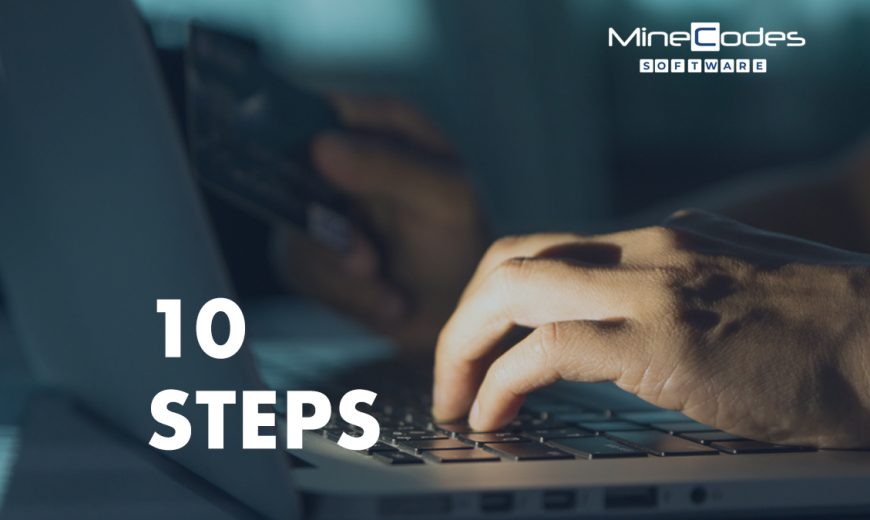
Identity theft has far-reaching implications. You may lose access to your financial accounts or have a lien placed on your home without your knowledge. It’s possible that you’ll be arrested. What would you do to avoid these dreadful scenarios? Here are a few quick tips to help you stay one step ahead of the crooks. None of these will shield you from a thief who has deliberately targeted you, but most criminals go for the simple targets—those who refuse to protect themselves. These ten pointers will help ensure that you and your identity aren’t easy prey.
- Shred, shred, shred
Never throw away or recycle any bank accounts, bills, or other documents containing personal details. Purchase and use a home paper shredder. If you’re in question, shred!
- Keep Your Documents Secure
Birth certificates, tax returns, social security cards, and other essential records do not require continuous access. Keep them in a fire-resistant safe. This is preferable to a bank safe deposit box. Banks have been known to drill out boxes and withdraw their contents without warning, and box contents are not insured.
Why not add a lockbox to your digital documents as well? You will guarantee that a snoop who gains access to your device won’t be able to read your confidential documents by using encryption software.
- Strengthen The Passwords
Real, a breach at any secure site could potentially expose your login credentials to thieves, but you can reduce the risk by using a different strong password for each secure site. To keep track of your passwords, you’ll need a password manager.
4. Mum’s the Word
Personal information is needed when applying for some programmes, such as a mortgage or a new insurance account. However, at that stage, you’ve started the process and confirmed that you’re dealing with a legitimate business. Zip your lip when an organisation contacts you through snail mail, email, or phone, requesting personal information. If you think the contact is valid, ask for a way to get in touch with them after you’ve done some research.
- Don’t Believe Anything You’ve Seen
It’s convenient to have access to tech support for any technical issues you might have. Don’t be misled by ostensibly tech support agents who call or email you in some other way. Yes, they will say that your machine is infected with viruses and that you must get it cleaned or face legal consequences. They’ll make up some ridiculous storey to get access to your machine, but eventually they’ll start asking for passwords and remote access. Put the phone down.
- Get your phone locked.
An identity thief’s dream is the smartphone in your wallet. It probably has your email, text messages, social media, and other applications signed in and ready to use. It’s jam-packed with personal information, like all of your contacts. To lock the phone, you must use a strong authentication process. A four-digit PIN is insufficient, as is a swipe pattern that is too plain. Biometric authentication, such as fingerprint or facial recognition, such as that provided by the iPhone X, is your best bet, backed up by a seriously strong passcode.
- Phishing Isn’t Fun at All
It takes a lot of effort to get a data-stealing Trojan onto millions of computers. It’s a lot easier to dupe victims into handing over their credentials. Phishing websites imitate banking and other sensitive websites in the hopes of tricking some unsuspecting victim into entering his username and password. They could even take you to the real place. Don’t reveal your true identity. Don’t click any links in an email that appears to be from your bank. Instead, go directly to the bank’s website. Check for a secure HTTPS URL with a lock icon, and double-check the URL in the address bar. Keep away from a site if your antivirus or browser flags it as fake!
Phishing is a problem in the workplace as well. Malefactors craft highly persuasive emails to trick employees or executives into giving away their passwords or even moving money into shady accounts in an assault known as spear phishing. Keep an eye on your work email as well.
- Placed in a security framework
A powerful antivirus, or even an entire protection suite, is required for every PC and laptop. Antitheft support for laptops is included in a few security suites; there are even standalone utilities that can lock down a missing or stolen laptop and even assist in its recovery. Antivirus and antitheft software for mobile devices are often combined. Android devices are especially vulnerable, but any computer can be lost or stolen, so use security software.
- Refrain from oversharing
Sharing your posts and photos with your social media buddies is fun, but if you’re not careful, you might be sharing with identity thieves. It’s important to properly protect your social media accounts. Check your privacy settings on a regular basis, as social media sites are notorious for changing them.
- Get Free Credit Reports
You are entitled to one free credit report a year from each of the three major credit bureaus. At www.annualcreditreport.com, you can sign up for TransUnion, Equifax, and Experian reports. Although the Equifax data breach revealed the personal information of 143 million Americans, the organisation is still operating. Here’s a tip: don’t get all of them at once. Have them four months apart, one at a time. This will provide you with greater overall coverage. Also, consider signing up for Credit Karma, a free, ad-supported service that monitors your credit score.
One more thing to remember. You’ve already seen ads offering identity fraud security. In fact, these programmes won’t be able to prevent identity theft, but they can help you cope with the aftermath. Remember what identity fraud security programmes do (and don’t do) before determining whether or not you’re willing to pay for it.
To defend yourself from identity fraud, you don’t have to make drastic lifestyle changes. If you follow these ten basic guidelines, you’ll have a fair chance of avoiding robbery.
#IdentityProtection #Phishing #PasswordsSecurity #Antitheft
Article Credits –
invespcmag.com



